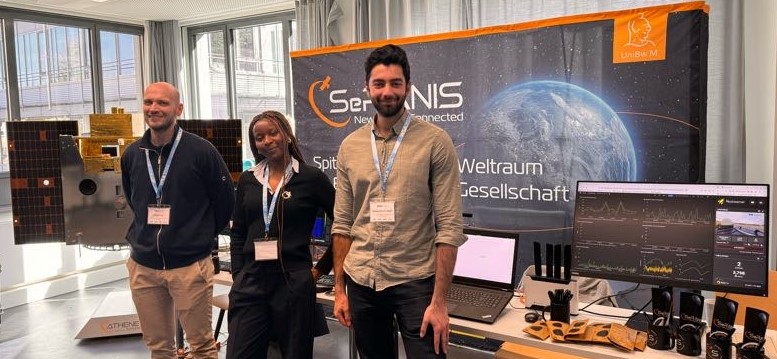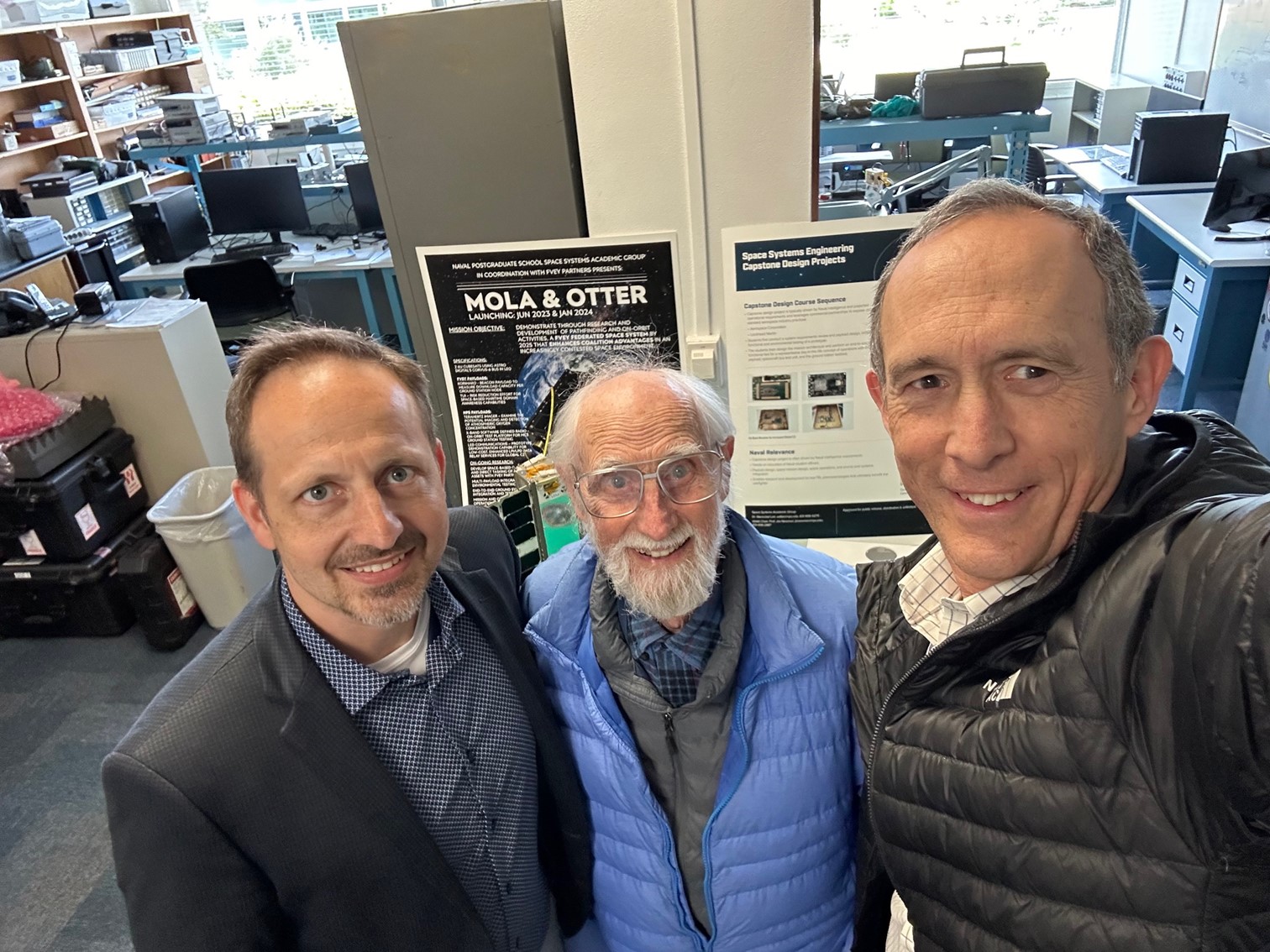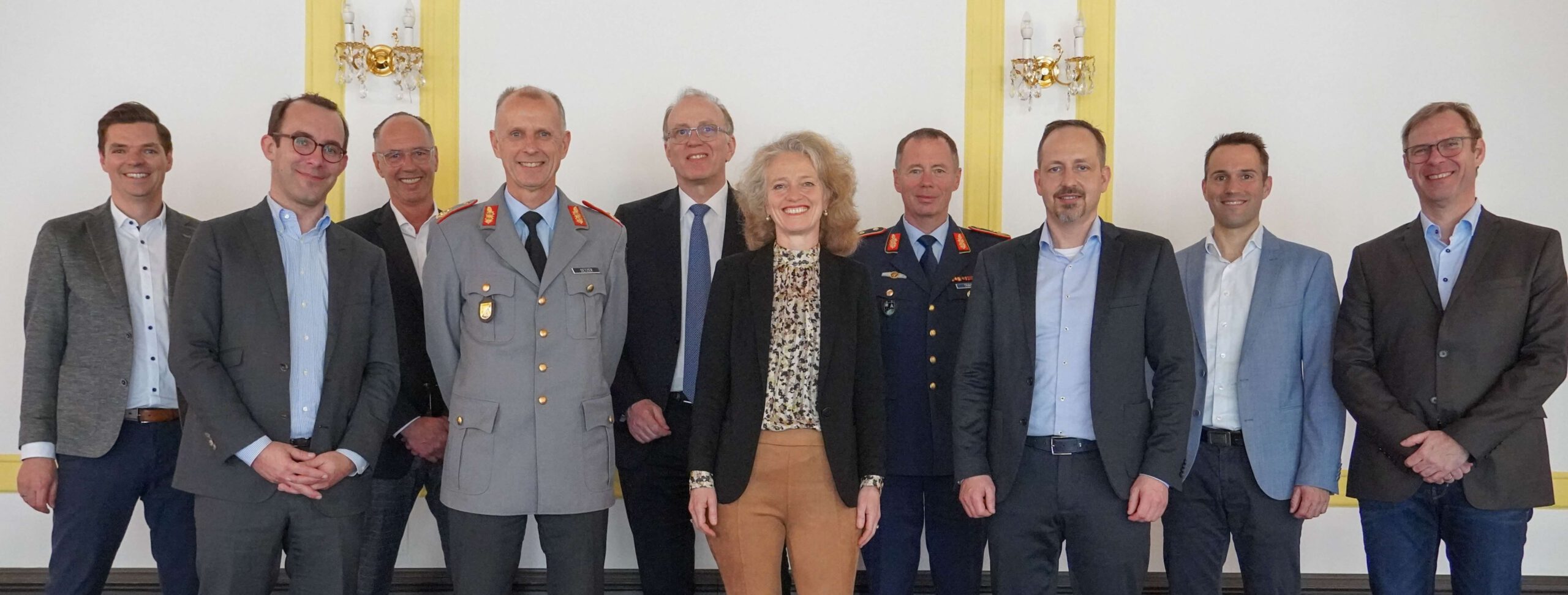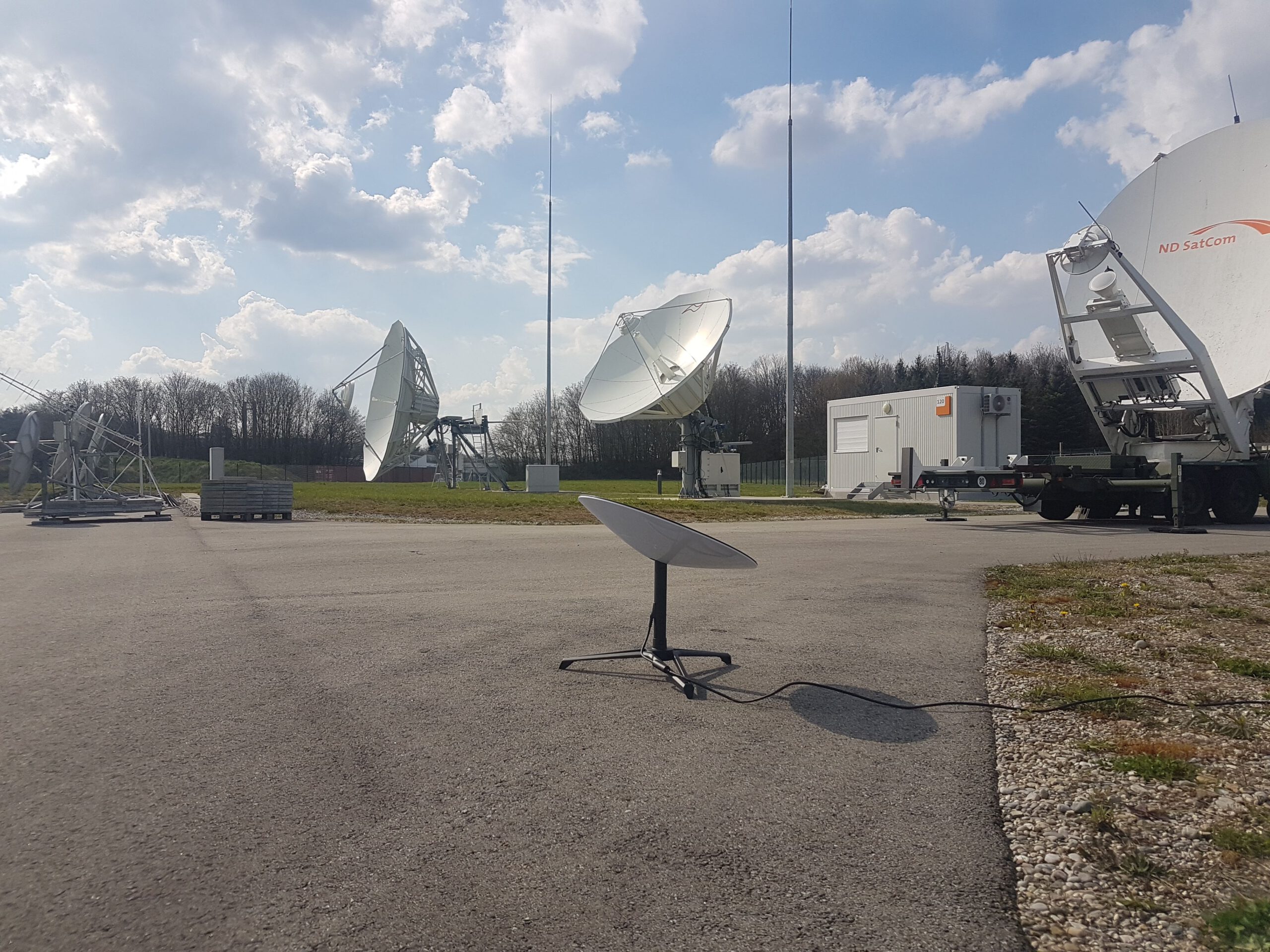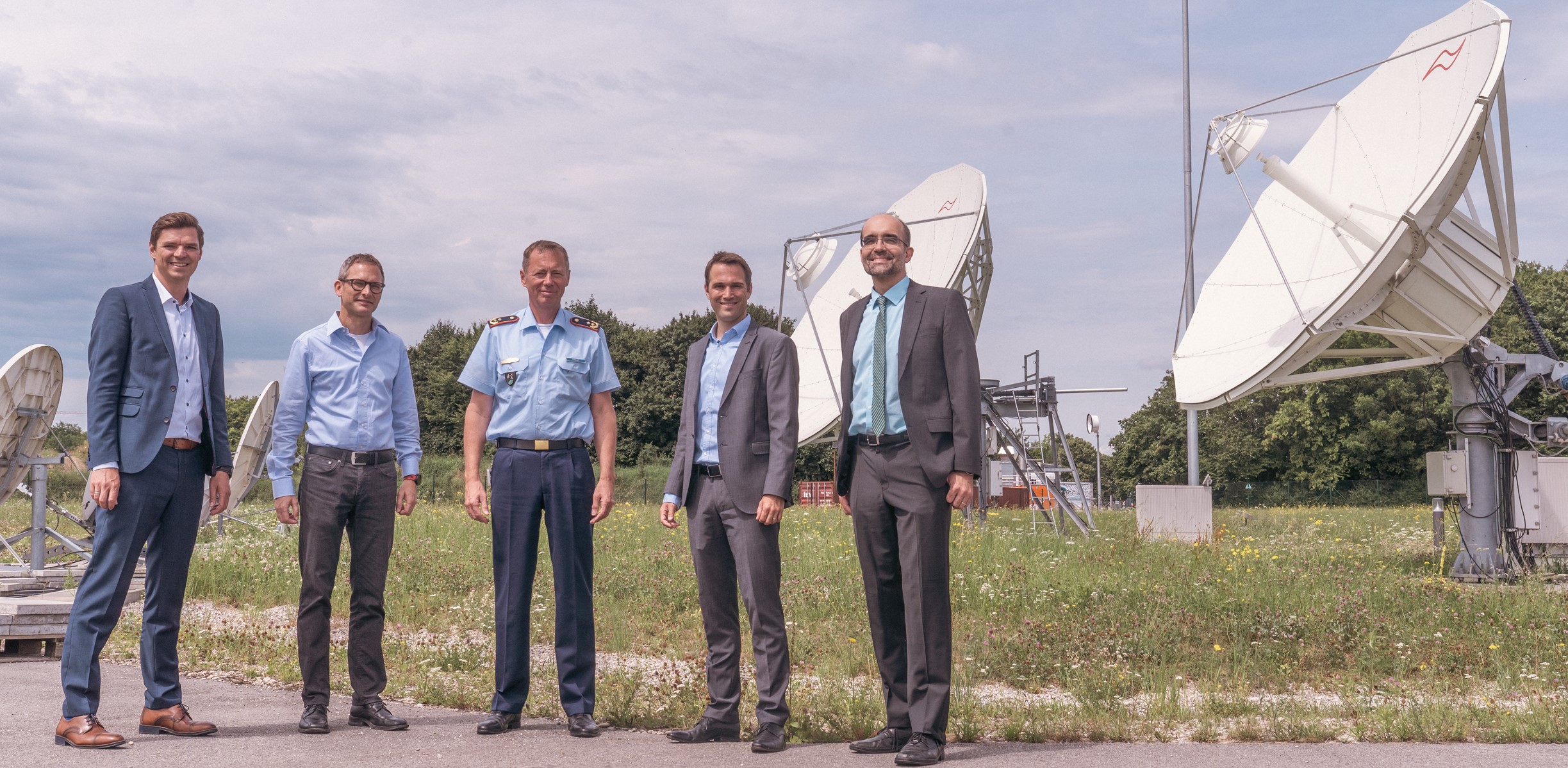SeRANIS PhD students present a B5G/6G demonstrator at the WSA that heralds the future of wireless communication.
The “27th International Workshop on Smart Antennas” (WSA 2024) took place at the TUD Dresden University of Technology from March 17 to 19, 2024. There, SeRANIS PhD students Diego Tuzi, Phoebe Agbo and Sertaç Övünç Kaya presented a “B5G/6G demonstrator for indirect satellite connectivity”. The demo met with great interest in the SeRANIS satellite “ATHENE 1”, especially from the sponsors IEEE, IEEE Communication Society and 5G Lab Germany – a strong sign of the potential of the groundbreaking technology.
A Revolution in Network Integration
A 5G system usually consists of a core network and a radio access network (RAN), which are connected to each other via a fiber optic link. The core network can be thought of as a server or several servers distributed in data centers. Among other things, it handles authentication, which is used to check whether a smartphone user can log into the network with their SIM card and use its services. The radio access network, on the other hand, consists of several base stations, which are recognizable as “antenna towers”.
At this point, the B5G/6G demonstrator offers a practical example of the seamless integration of terrestrial and non-terrestrial networks. Instead of traditional fiber optic connections, a Low Earth Orbit (LEO) satellite network is used to connect the core network to the corresponding radio access network.
This innovative architecture, known as LEO satellite backhauling, promises to extend the coverage of terrestrial networks to remote areas where fiber optic connections cannot be installed due to high costs and poor practicality. Thanks to the indirect satellite connection, all that is required is the installation of a base station (i.e. the tower with the antennas) to which the smartphone connects. This station then uses a satellite connection to reach the core network and the Internet via a satellite constellation (e.g. Starlink, OneWeb). This would enable fast mobile Internet access, for example in a small community in a rural area. Such a network experience would be very similar to conventional connections in terms of performance and would also help to reduce the “digital divide”.
Deep Dive
The demo impressively showed that common applications tolerate the delay and performance typical of LEO satellite networks. This was made possible by implementing different solutions: the core side of the network uses the open5GCore solution developed by Fraunhofer FOKUS, while the end-to-end LEO satellite system was emulated using the open source project openSAND (CNES and Thales Alenia Space). The RAN side uses a gNB base station from Amarisoft, which enables over-the-air connection with conventional smartphones and modems.
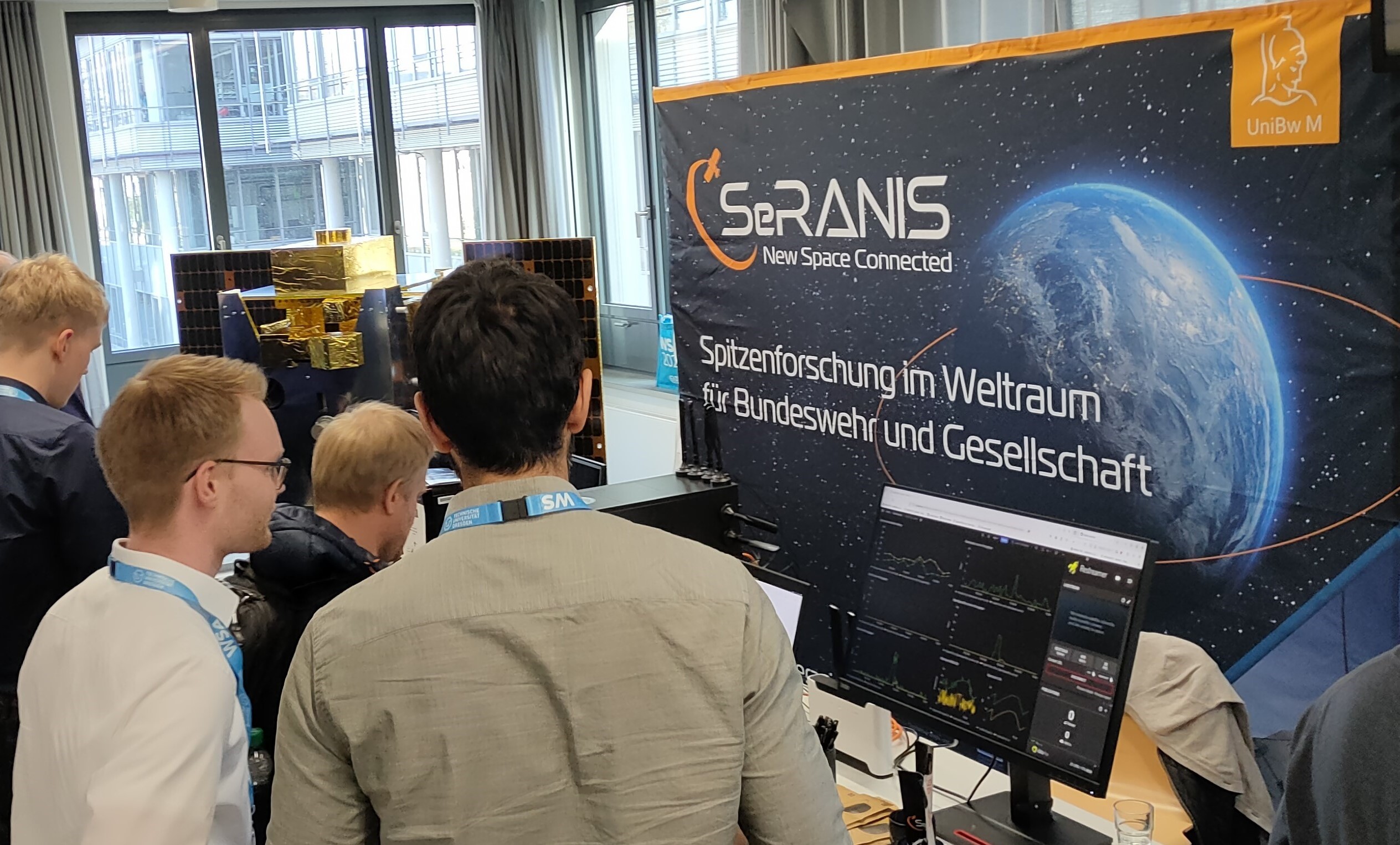
Outlook and Opportunity for ATHENE 1
The team is already planning the next step towards the future of mobile communications. Direct connectivity is also to be tested with the SeRANIS satellite ATHENE 1: Here, the satellite itself will act as a base station (not on the ground, but only in space) and connect directly to the smartphone. In addition to the general public, scientists and soldiers could also benefit from this use case.
An example: Imagine a researcher conducting studies in Antarctica in a few years’ time. Suddenly, he discovers something he cannot identify and wants to contact his partner from the distant laboratory via smartphone. This should be possible in the near future.
ATHENE 1 will therefore make it possible to test RF/optical backhauling and direct connection solutions. These advances will not only revolutionize connectivity in remote areas, but also advance the ITU’s vision of IMT-2030 (6G).
